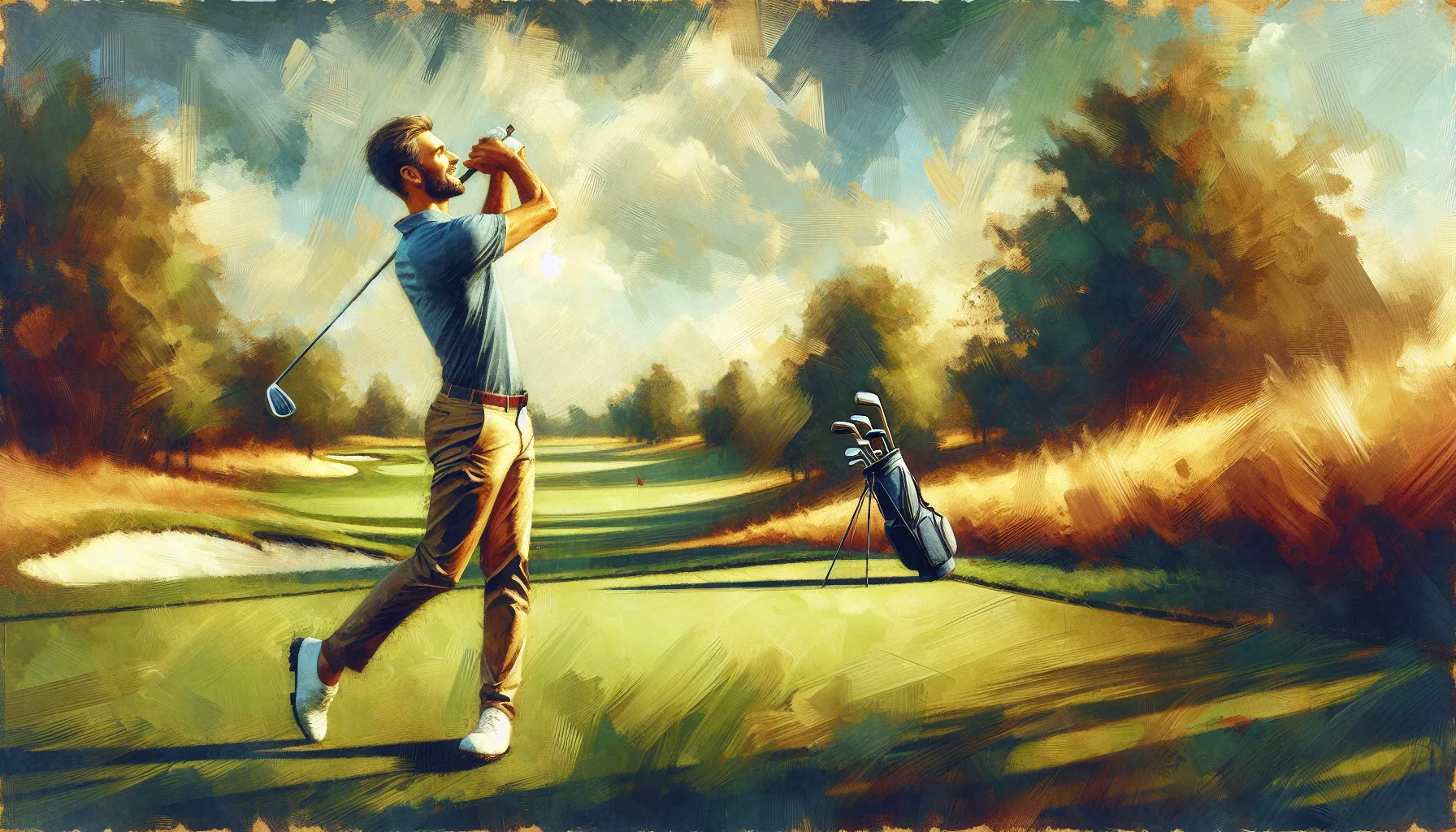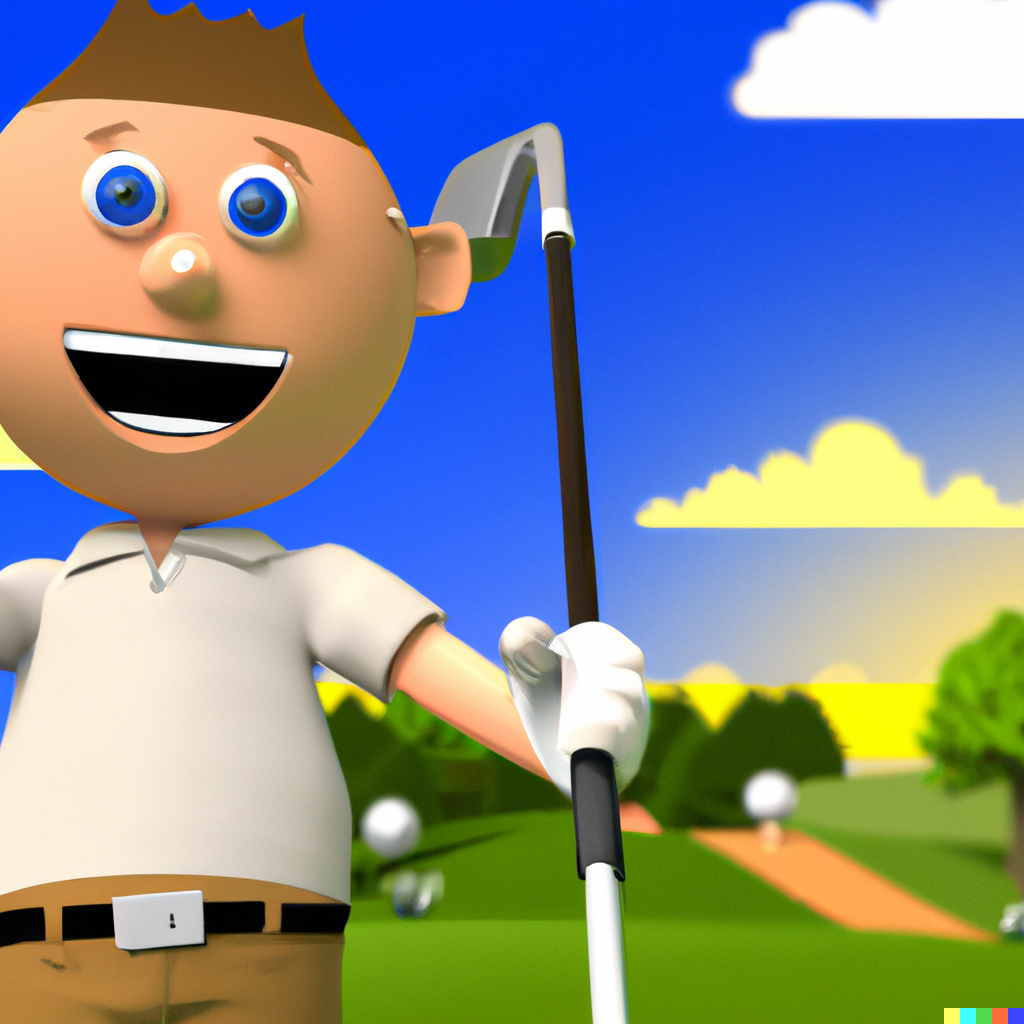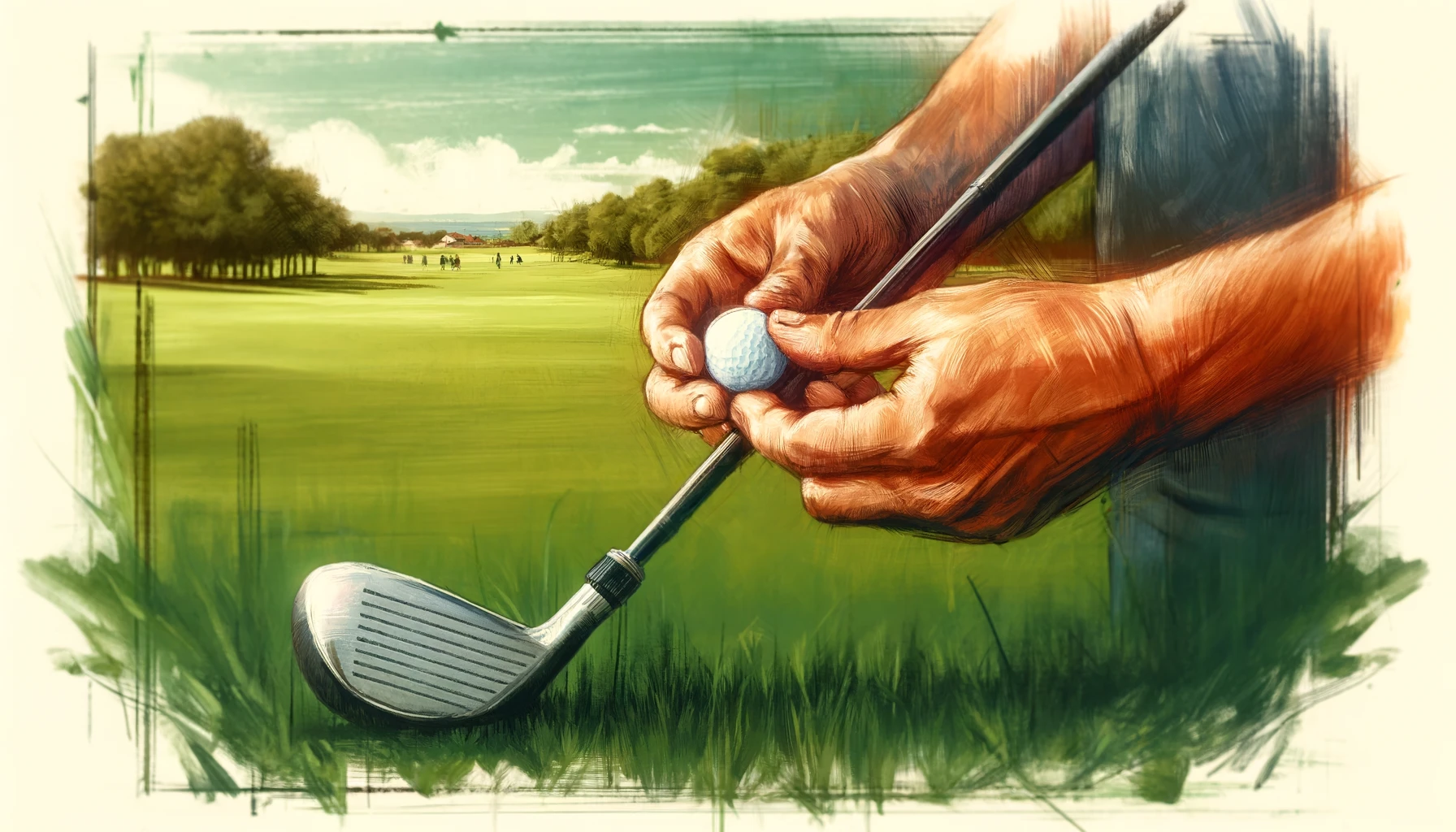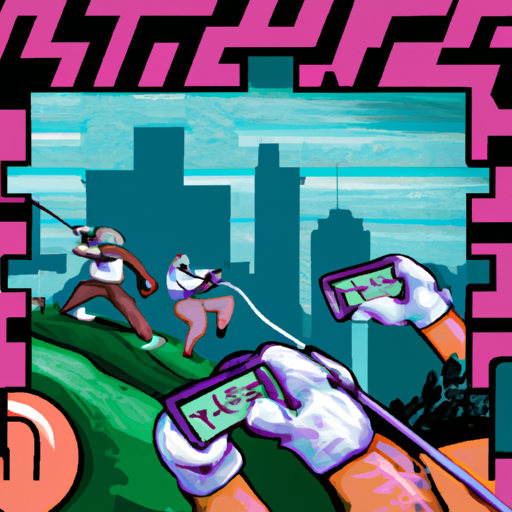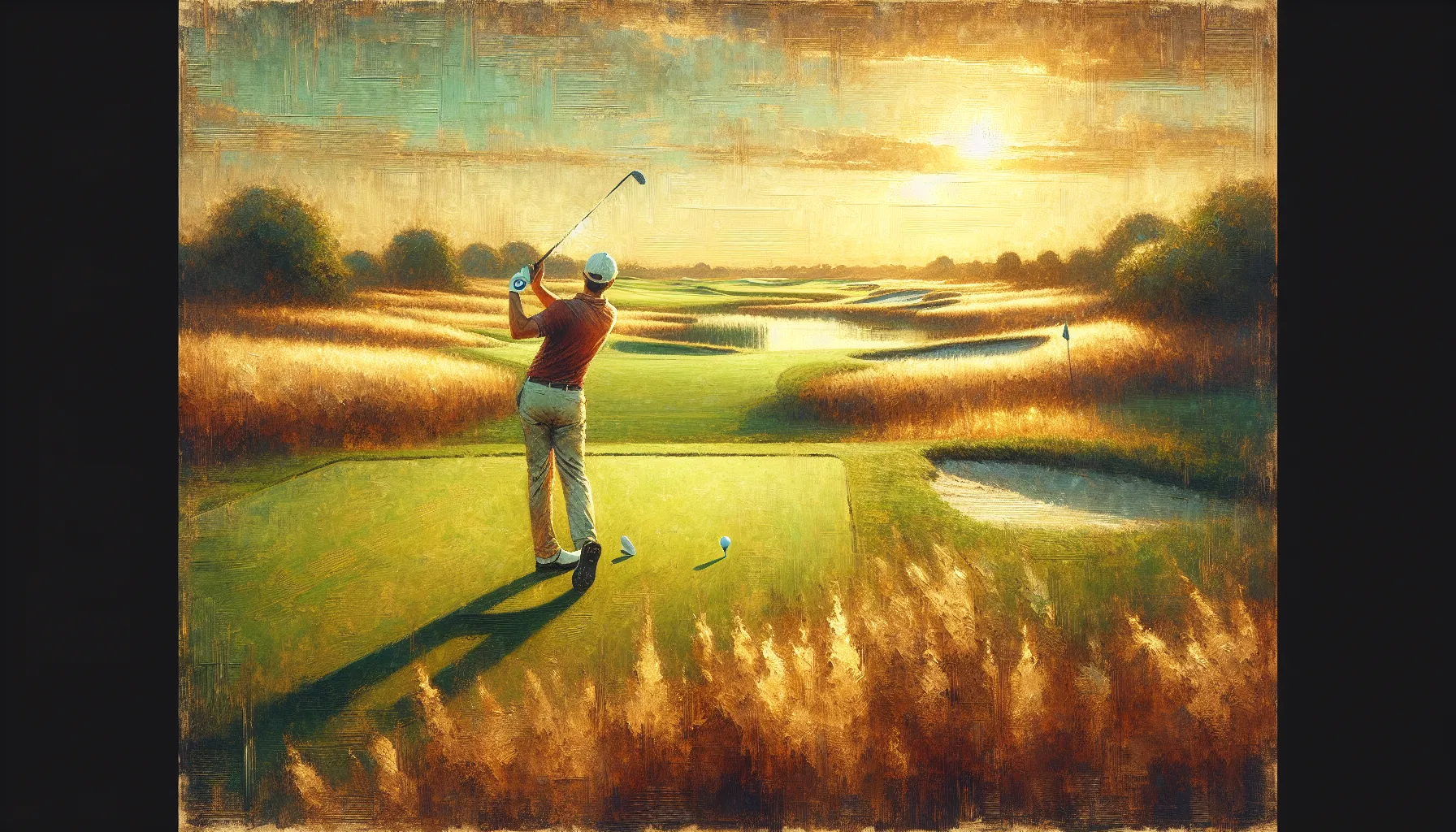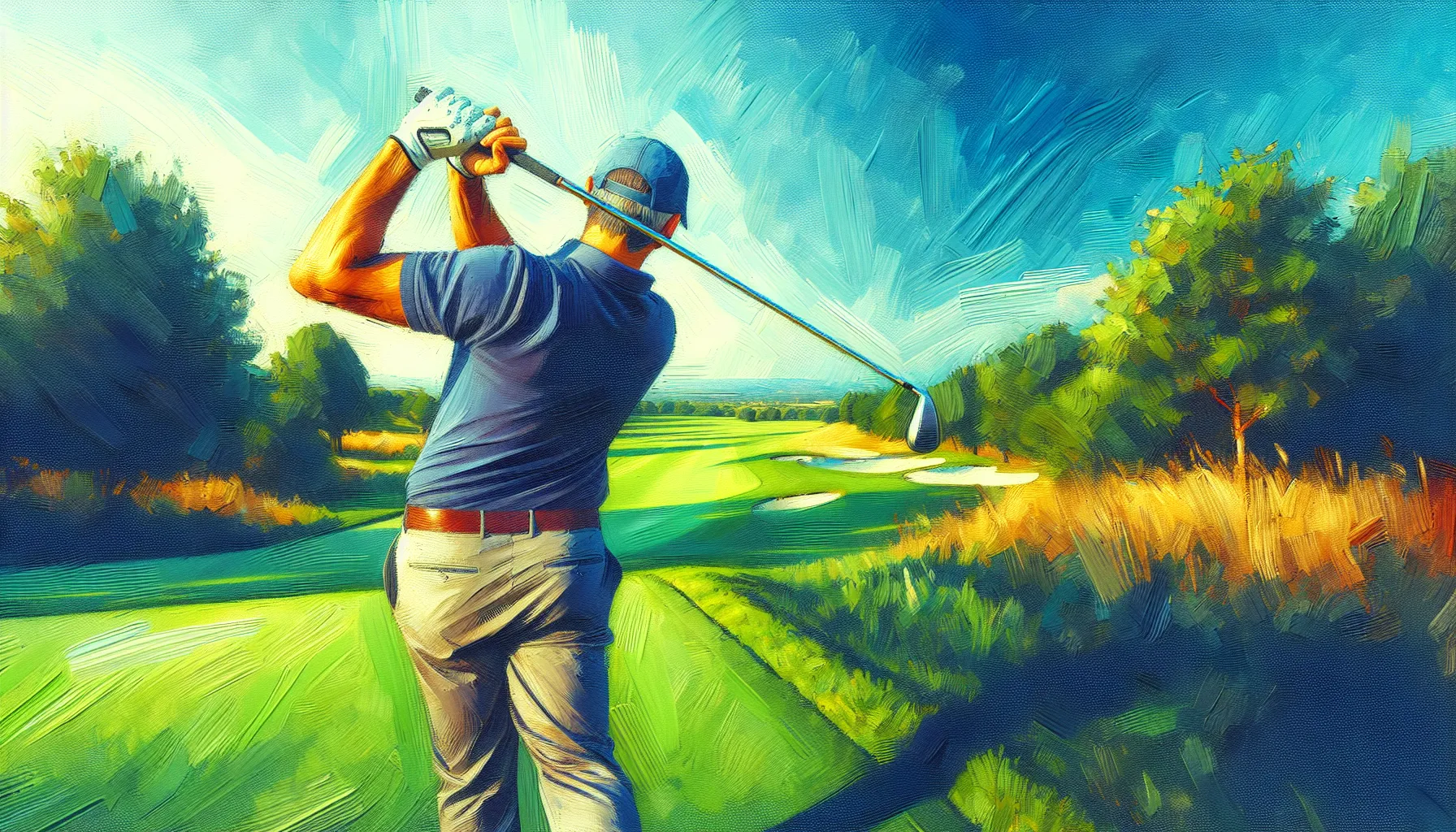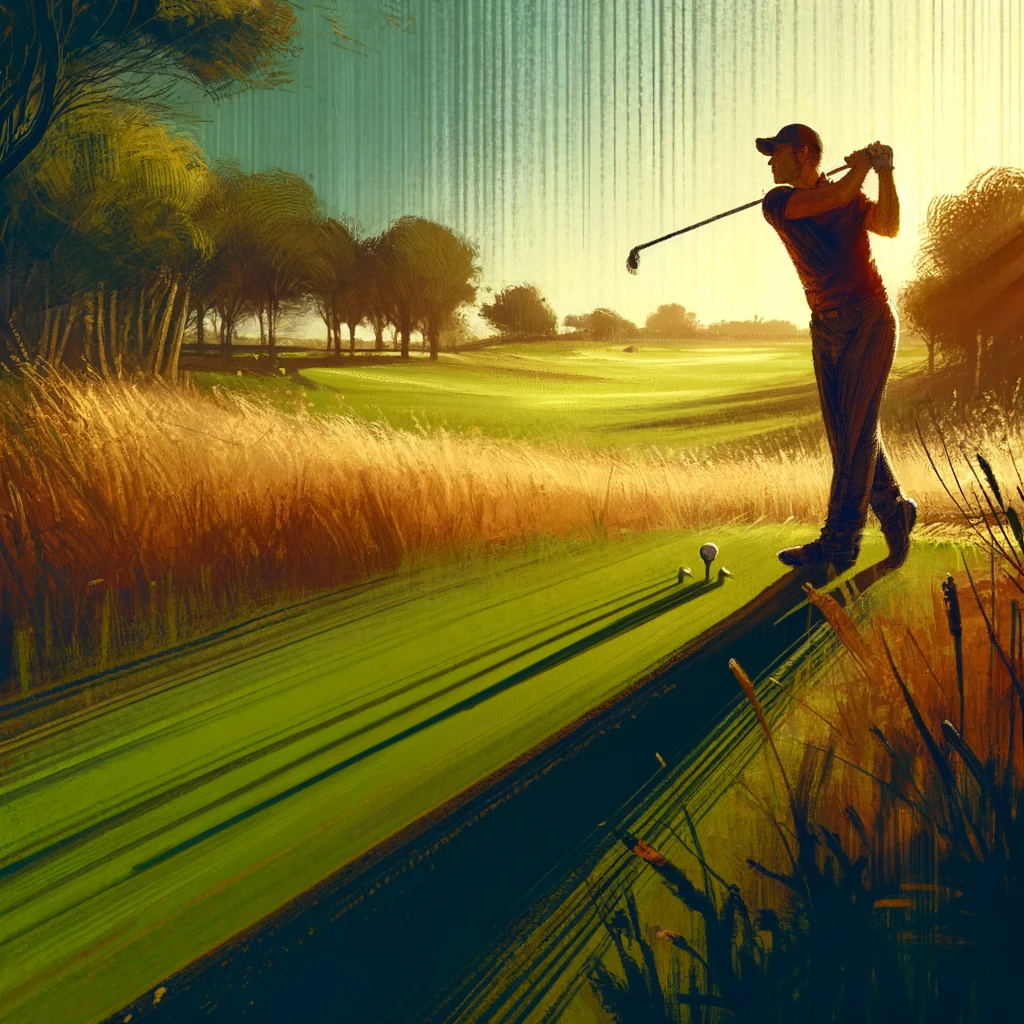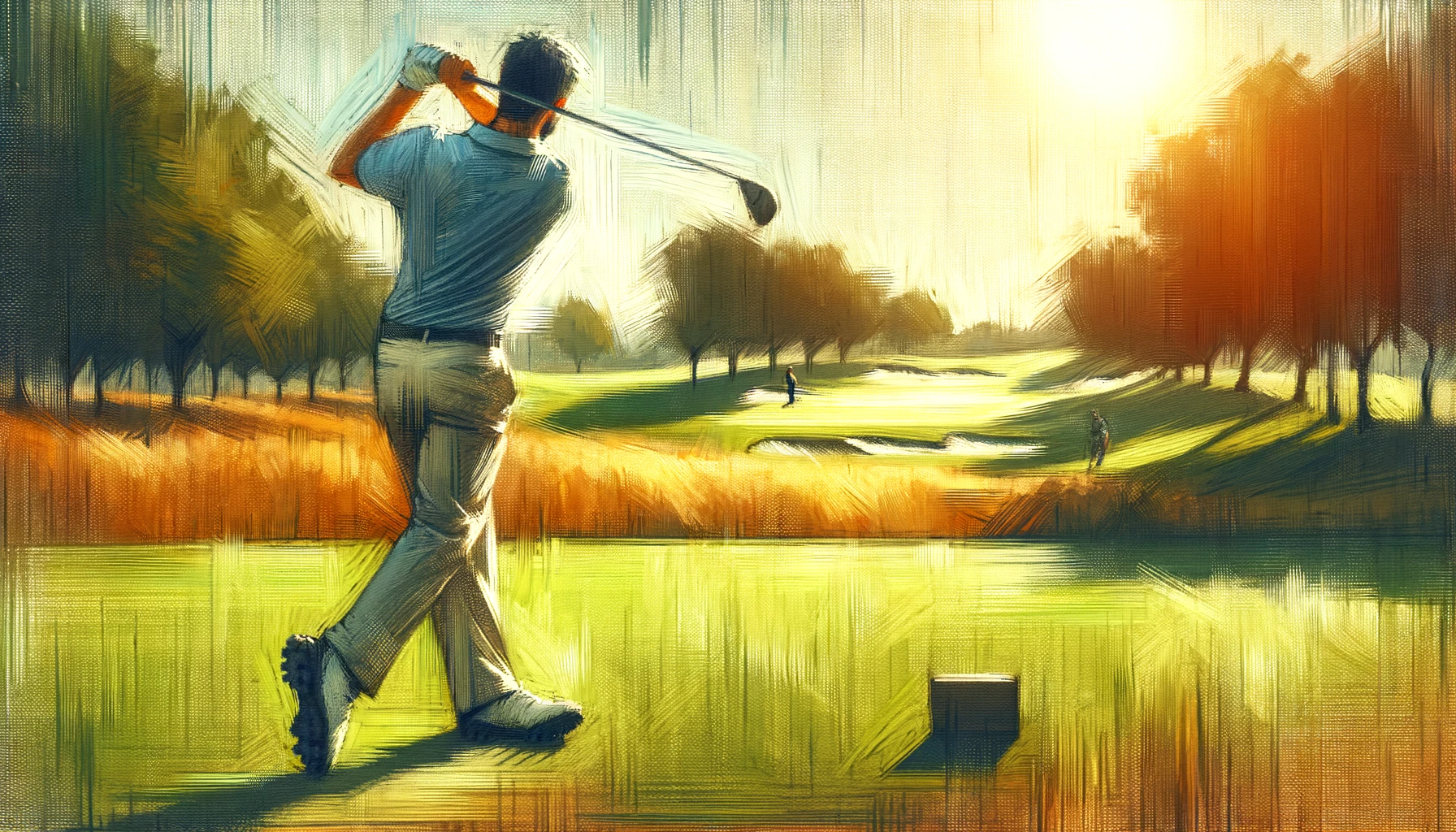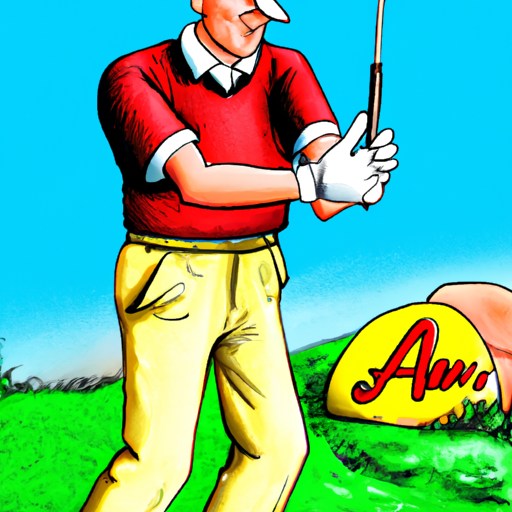How to Play Golf Better and Enjoy the Game More
Ready to take your golf game from frustrating to fantastic? I've been right where you are, struggling to break 100 and wondering if I'd ever impress my buddies on the course. But let me tell you, I've discovered some game-changing secrets that have transformed my play, and I'm itching to share them with you. In this article, we'll dive into the nitty-gritty of how to play golf better, covering everything from perfecting your swing to mastering the mental game. Plus, I've got some killer FAQs at the end that'll answer all your burning questions. So grab your favorite driver, and let's tee off on this journey to golf greatness!
You know that feeling when you step up to the tee, heart pounding, palms sweaty, hoping against hope that this time, just this once, you'll crush that drive straight down the fairway? I've been there more times than I can count. The frustration of slicing into the woods, the embarrassment of topping the ball in front of your playing partners, the sinking feeling as you watch your scorecard balloon hole after hole. It's enough to make you want to snap your clubs over your knee and take up knitting.
But here's the thing: it doesn't have to be this way. I've discovered that with the right techniques, a bit of insider knowledge, and a dash of determination, you can transform your game from laughable to laudable. And the best part? You don't need to spend hours at the driving range or invest in the latest, most expensive equipment. I'm talking about simple, actionable strategies that will have you playing better golf almost instantly.
So, are you ready to kiss those embarrassing rounds goodbye and start impressing your buddies with booming drives and pinpoint accuracy? Buckle up, because I'm about to share the secrets that took me from hapless hacker to weekend wonder. Let's dive in and unlock your true golfing potential!
 Improve your golf game with expert tips and techniques.
Improve your golf game with expert tips and techniques.The Secret Sauce: My Journey From Duffer to Dynamo
Picture this: a middle-aged guy, slightly overweight, standing on the first tee with a set of hand-me-down clubs and a prayer. That was me, just a few short years ago. I'd always loved the idea of golf – the camaraderie, the challenge, the excuse to spend a beautiful day outdoors. But every time I played, it felt like the golf gods were laughing at me. I couldn't hit a straight shot to save my life, and my scores... well, let's just say I could have given my age a run for its money.
I was ready to give up. I mean, who wants to spend their weekends feeling like a complete failure? But then, something amazing happened. I met an old player at my local course who took pity on me (or maybe he just couldn't bear to watch anymore). He pulled me aside and said, "Son, you've got potential. You just need to know the secrets."
Over the next few months, this grizzled veteran showed me things I'd never even considered. It wasn't about swinging harder or buying fancier clubs. It was about understanding the subtle nuances of the game, the little tweaks that make all the difference. He taught me about proper alignment, the importance of a pre-shot routine, and how to read greens like a book.
But the real game-changer? He introduced me to what I now call the "Fairway Mastery Blueprint." This isn't some complicated system that requires hours of practice. It's a simple, step-by-step approach that anyone can use to dramatically improve their game.
The results were nothing short of miraculous. Within weeks, I was hitting straighter, longer shots. My scores started dropping like a stone. And the looks on my buddies' faces when I outdrove them for the first time? Priceless.
Now, I'm not saying I'm ready for the PGA Tour. But I've gone from being the guy everyone dreaded having in their foursome to the one they fight over sometimes. And the best part? I did it without spending a fortune on lessons or equipment.
That's why I'm so excited to share what I've learned with you. Because I know that if a hopeless case like me can turn things around, anyone can. So, are you ready to discover the secrets that will revolutionize your game? Let's get into the nitty-gritty and start your journey to golfing greatness!
How Can I Improve My Golf Swing Quickly?
Ah, the million-dollar question! I remember countless nights lying awake, replaying my awful swings in my head, wondering if I'd ever figure out how to hit the ball straight. But here's the thing: improving your golf swing doesn't have to be a slow, painful process. In fact, with a few simple tweaks, you can see dramatic improvements almost instantly.
First things first, let's talk about grip. You wouldn't believe how many weekend golfers I see out there with a death grip on their club. Trust me, strangling your driver isn't going to make the ball go any straighter. Instead, try this: hold your club like you're shaking hands with an old friend - firm, but not tight. This simple adjustment can work wonders for your control and distance.
Now, let's address the elephant in the room: your backswing. I used to think that the key to hitting long drives was to swing back as far as humanly possible. Boy, was I wrong! Overswinging is a one-way ticket to Sliceville, population: you. Instead, focus on a controlled, three-quarter backswing. It might feel short at first, but I promise you'll see more consistent contact and straighter shots.
Here's a quick drill I swear by:
1. Grab a headcover or towel
2. Place it under your left armpit (for right-handed golfers)
3. Take some practice swings, keeping the headcover in place
4. If it falls, your swing is too long or your arms are separating from your body
It's a simple trick, but it works wonders for maintaining proper form and avoiding that dreaded over-the-top move.
Let's talk about the moment of truth: impact. The key here is to keep your head still and your eyes on the ball. I know it's tempting to look up and see where your shot is going, but resist the urge! Keep your head down until well after you've made contact. It's like magic - suddenly, those topped shots and whiffs will become a thing of the past.
Now, here's a little secret that revolutionized my game: the follow-through. So many golfers focus all their energy on the backswing and impact, completely neglecting what happens after. But a good follow-through is crucial for power and accuracy. Think about it like throwing a frisbee - the follow-through is what gives it that smooth, straight flight. Same principle applies in golf.
Try this: after you hit the ball, hold your finish for a full three seconds. It might feel awkward at first, but it'll force you to swing through the ball instead of stopping at impact. You'll be amazed at how much more solid your contact becomes.
Lastly, let's address the mental aspect of the swing. I used to step up to the ball with a head full of swing thoughts - keep your left arm straight, rotate your hips, don't lift your head, and on and on. It was paralyzing! Now, I focus on just one swing thought per round. Maybe today it's "smooth takeaway," or "accelerate through impact." Keep it simple, and you'll be amazed at how much more natural your swing feels.
Remember, the goal isn't to have a textbook-perfect swing. It's to have a repeatable swing that works for you. These tips aren't about transforming you into the next Tiger Woods overnight. They're about helping you find consistency and confidence in your swing. And let me tell you, there's nothing quite like the feeling of stepping up to the tee knowing - not hoping, but knowing - that you're going to stripe one right down the middle.
So, are you ready to kiss those embarrassing swings goodbye and start impressing your playing partners? Give these tips a try on the range, and you'll might see improvement faster than you can say "fore!" And hey, if you're still struggling, remember: there's always the 19th hole. Sometimes the best way to improve your score is to learn how to fudge the numbers over a cold one. (Just kidding... mostly.)
What Are The Best Strategies For Lowering My Golf Scores?
Alright, my fellow weekend warrior, let's get down to brass tacks. Lowering your golf scores isn't just about hitting picture-perfect shots (though that certainly helps). It's about playing smarter, more strategic golf. And trust me, I've learned this the hard way.
First up, let's talk course management. I used to step onto every tee box with my driver in hand, ready to unleash fury on that little white ball. The result? More time in the woods than a lumberjack. Now, I take a more measured approach. Sometimes, the smart play is a long iron or a hybrid off the tee. It's not about how far you can hit it, it's about putting yourself in the best position for your next shot.
Here's a little trick I call the "Fairway First" strategy:
1. Assess the hole before teeing off
2. Identify the widest part of the fairway
3. Choose the club that will land you in that sweet spot, even if it's not your longest club
4. Enjoy the view from the short grass!
It's amazing how much easier golf becomes when you're playing from the fairway instead of trying to hit miracle shots from behind trees.
Now, let's address the elephant in the room: your short game. I used to spend hours at the driving range, trying to add those extra 10 yards to my drive. But you know what really started shaving strokes off my score? Focusing on my chipping and putting. Remember, you use your putter on every hole (unless you're having a really good day). So why not give it the attention it deserves?
Here's a quick putting drill that's been a game-changer for me:
1. Place five balls in a circle around the hole, each about 3 feet away
2. Putt each ball, focusing on a smooth, pendulum-like stroke
3. If you miss one, start over
4. Once you can consistently make all five, move back to 4 feet, then 5 feet
It's simple, but it builds confidence on those knee-knocker putts that can make or break your round.
Let's talk about a topic that makes many weekend golfers break out in a cold sweat: bunkers. I used to treat sand traps like they were filled with lava. But here's the secret: the sand is your friend. Instead of trying to hit the ball, focus on hitting the sand about an inch behind the ball. Let the club do the work, and you'll be amazed at how often you escape in one shot.
Now, onto a strategy that's often overlooked: playing within yourself. We've all been there, faced with a 200-yard carry over water, convinced that this is the moment we're going to pull off the shot of our lives. Spoiler alert: it rarely ends well. Instead, know your limitations and play the percentages. Laying up short of the water and then hitting a wedge close is always better than donating balls to the course.
Here's a mantra I want you to repeat before every round: "Bogey is my friend." Too often, we get caught up trying to make par on every hole. But unless you're playing on the PGA Tour, that's not realistic. Instead, aim for bogey on the tough holes. You'd be surprised how often you'll end up with a par when you're not putting pressure on yourself to make one.
Lastly, let's talk about the mental game. Golf is as much a mental challenge as it is a physical one. I used to let one bad hole ruin my entire round. Now, I treat each hole as its own mini-game. Had a triple bogey on the last hole? That's old news. Focus on the shot in front of you.
Try this visualization technique before each shot:
1. Close your eyes and take a deep breath
2. Picture the exact shot you want to hit, from takeaway to follow-through
3. See the ball flying on your intended line and landing exactly where you want it
4. Open your eyes and execute with confidence
It might sound a bit woo-woo, but I'm telling you, it works wonders for your confidence and focus.
Remember, lowering your scores isn't about completely overhauling your game overnight. It's about making smart decisions, playing to your strengths, and avoiding those big numbers that can derail a round. Start implementing these strategies, and I guarantee you'll start seeing lower scores and having more fun on the course.
So, are you ready to stop being the guy who's "just happy to break 100" and start being the one everyone wants on their scramble team? Give these tips a shot, and get ready to start collecting some skins from your buddies. Just don't forget to buy a round at the 19th hole - after all, we golfers have to stick together!
How Can I Improve My Mental Game In Golf?
Ah, the mental game – the final frontier of golf improvement, and often the toughest nut to crack. I remember the days when my own thoughts were my worst enemy on the course. One bad shot, and suddenly I'm spiraling faster than a slice into the woods. But let me tell you, mastering the mental side of golf can be the difference between a frustrating round and your personal best.
First things first, let's talk about expectations. I used to step onto the first tee expecting to play like Tiger Woods in his prime. Newsflash: unless you're actually Tiger Woods, that's a recipe for disappointment. Instead, try setting realistic goals for each round. Maybe it's hitting a certain number of fairways, or limiting yourself to no more than one three-putt. These smaller, achievable goals keep you focused and positive throughout the round.
Here's a pre-round ritual that's worked wonders for me:
1. Arrive at the course early, giving yourself plenty of time to warm up
2. During your warm-up, focus on rhythm and tempo rather than technical swing thoughts
3. On the practice green, make your last putt before heading to the first tee
4. Take three deep breaths before teeing off, visualizing a great opening drive
This routine helps settle those first-tee jitters and sets a positive tone for the round.
Now, let's address the elephant in the room: bad shots. They happen to everyone, even the pros. The key is how you respond to them. I used to let one bad shot snowball into a disastrous hole, or even a ruined round. But here's a little secret: the ball doesn't care about your last shot. Each new shot is an opportunity for greatness.
Try this the next time you hit a stinker:
1. Allow yourself exactly 10 seconds to be frustrated
2. Take a deep breath and literally turn your back on the bad shot
3. Visualize your next shot going exactly where you want it
4. Approach the ball with a clean slate and positive attitude
It's amazing how this simple reset can prevent one bad shot from turning into a string of them.
Let's talk about pressure. Whether it's a friendly $5 Nassau with your buddies or the club championship, pressure can make even the simplest shots feel impossible. The key is to embrace it rather than fight it. I like to reframe pressure as excitement. Instead of thinking, "I'm so nervous about this shot," try, "I'm excited for the opportunity to pull off a great shot."
Here's a quick breathing technique to calm those nerves:
1. Inhale deeply through your nose for a count of 4
2. Hold your breath for a count of 7
3. Exhale slowly through your mouth for a count of 8
4. Repeat this 3-4 times before a pressure shot
You'll be amazed at how much calmer and focused you feel.
Now, let's address one of the biggest mental traps in golf: overthinking. I used to stand over the ball running through a mental checklist longer than my grocery list. Keep your left arm straight, rotate your hips, don't lift your head, and on and on. The result? A swing that looked more like a spasm than a golf shot.
Instead, try this: pick one swing thought before each shot. Maybe it's "smooth takeaway" or "accelerate through impact." Focus on that single thought and let your muscle memory handle the rest. Golf is hard enough without trying to consciously control every aspect of your swing.
Here's another mental game changer: playing one shot at a time. It's easy to get ahead of yourself in golf, especially when you're having a good round. Suddenly you're adding up your score in your head, already planning your victory speech at the 19th hole. But that's a surefire way to lose focus and start making mistakes.
Try this technique to stay present:
1. After each shot, take a moment to reset
2. As you walk to your ball, focus on your breathing and the nature around you
3. When you reach your ball, that's your cue to focus solely on the next shot
4. Repeat this process for every shot of your round
This technique keeps you grounded in the present, preventing those anxious thoughts about your score or the difficult holes coming up.
Now, let's talk about a mental aspect that's often overlooked: body language. You've probably heard the phrase "fake it 'til you make it," right? Well, it applies to golf too. Even when you're feeling frustrated or discouraged, try to maintain positive body language. Stand tall, keep your head up, and walk with purpose between shots. You'd be amazed at how much this can influence your mental state and, consequently, your performance.
Here's a little trick I call the "Confidence Strut":
1. After each shot, regardless of the outcome, take three purposeful steps forward
2. Shoulders back, chin up, and a slight smile on your face
3. As you walk, think of a positive affirmation like "I've got this" or "Next shot is mine"
It might feel a bit silly at first, but trust me, it works wonders for your confidence and overall mindset.
Let's address another common mental hurdle: comparing yourself to others. It's so easy to get caught up in how far your playing partner is hitting it or how many putts they're sinking. But here's the truth: the only person you're really competing against is yourself. Instead of worrying about beating your buddies, focus on playing your best game.
Try this perspective shift:
1. Before each round, set a personal goal (like breaking 90 or hitting 50% of fairways)
2. Throughout the round, focus on that goal rather than your playing partners' performance
3. Celebrate your small victories, even if you're not winning the match
This approach keeps you focused on your own game and helps maintain a positive mindset, regardless of how others are playing.
Lastly, let's talk about the power of visualization. The mind is an incredibly powerful tool, and using it effectively can lead to remarkable improvements in your game. Before each shot, take a moment to clearly visualize the outcome you want. See the ball's flight path, where it lands, and even how it rolls out. The more vivid and detailed this mental image, the more likely you are to execute the shot successfully.
Here's a quick visualization routine:
1. As you approach your ball, pause and take a deep breath
2. Close your eyes and picture the perfect shot in your mind
3. See yourself making a smooth, confident swing
4. Imagine the ball flying exactly as you intend
5. Open your eyes, address the ball, and swing with confidence
Remember, golf is as much a mental game as it is a physical one. By implementing these strategies, you'll be well on your way to not just playing better golf, but enjoying it more too. After all, isn't that what it's all about?
So, are you ready to turn that mental game from a weakness into a strength? To step onto the first tee with confidence instead of dread? Give these techniques a try in your next round. Who knows? You might just surprise yourself - and your playing partners - with how well you handle the ups and downs of a round.
Now, let's move on to our next burning question about improving your golf game. Are you ready to unlock even more secrets to lowering your scores and impressing your buddies?
What Are The Most Effective Practice Drills For Improving My Golf Game?
Alright, my fellow golf enthusiast, let's dive into the world of practice drills. Now, I know what you're thinking - "Practice? We're talking about practice?" (in your best Allen Iverson impression). But trust me, the right drills can make a world of difference in your game, and they don't have to be boring or time-consuming.
First things first, let's talk about the driving range. I used to be that guy who'd show up, buy the biggest bucket of balls, and mindlessly smash driver after driver. Spoiler alert: it didn't do much for my game. Instead, try this approach:
1. Start with your wedges and work your way up to your longer clubs
2. For each club, hit 5 balls focusing solely on making solid contact
3. Then hit 5 balls trying to shape your shots (draw and fade)
4. Finally, hit 5 balls to specific targets on the range
This structured approach helps you warm up properly and gives purpose to your practice.
Now, let's address the elephant in the room: putting. It's not the sexiest part of the game, but it's where scores are made (or broken). Here's a drill I swear by, which I call the "Clock Drill":
1. Place 12 balls in a circle around the hole, each about 3 feet away
2. Starting at your "12 o'clock" position, putt each ball in order
3. If you miss one, start over from the beginning
4. Once you can consistently make all 12, move the circle out to 4 feet, then 5 feet
It's simple, but it builds confidence on those knee-knocker putts that can make or break your round.
Let's talk chipping. So many amateur golfers struggle with this crucial aspect of the short game. Here's a drill that'll have you chipping like a pro in no time. I call it the "Hula Hoop Challenge":
1. Place a hula hoop (or draw a circle) about 10 feet from where you're chipping
2. Drop 10 balls and try to land each one within the hoop
3. Keep track of how many you get in the hoop out of 10 attempts
4. Try to beat your record each time you practice
This drill helps you dial in your distance control and improves your overall touch around the greens.
Now, onto everyone's favorite topic: driving accuracy. We all love to bomb it off the tee, but if you can't find the fairway, you're in for a long day. Try this drill next time you're at the range:
1. Imagine a fairway between two targets on the range (make it realistically wide)
2. Hit 10 drives, aiming for your imaginary fairway
3. Keep track of how many would've found the short grass
4. Challenge yourself to improve your percentage each session
It's a great way to simulate on-course pressure and improve your accuracy when it really counts.
Let's not forget about those dreaded bunker shots. I used to avoid practicing these like the plague, but that only made things worse on the course. Here's a simple drill to turn that sand into your friend:
1. Draw a line in the sand about 6 inches behind your ball
2. Focus on hitting the line, not the ball
3. Try to get 7 out of 10 shots out of the bunker cleanly
Remember, in bunker play, you're trying to hit the sand, not the ball. This drill helps ingrain that counter-intuitive feeling.
Now, here's a drill that addresses one of the most common faults I see in amateur golfers: the slice. If you're fighting a slice (and let's be honest, who isn't?), try the "Headcover Drill":
1. Place a headcover about a foot outside your ball, in line with your target
2. Take your normal swing, focusing on avoiding the headcover
3. This encourages an in-to-out swing path, promoting a draw (or at least straightening out that slice)
It's a simple visual cue that can work wonders for your ball flight.
Let's talk about a drill for those pressure-packed situations on the course. I call this one the "Pressure Putt Challenge":
1. Set up 10 three-foot putts in a circle around a hole
2. You must make all 10 in a row
3. If you miss one, you start over from the beginning
4. Time yourself and try to beat your best time each session
This drill simulates the pressure of those must-make putts and helps build confidence when it really counts.
Finally, let's address the full swing with a drill I like to call the "Tempo Master":
1. Take your normal stance without a ball
2. Close your eyes and take 10 full swings
3. Focus on maintaining a smooth, consistent tempo
4. After 10 swings, open your eyes and hit a ball with the same tempo
This drill helps you develop a repeatable swing without getting bogged down in technical thoughts.
Remember, the key to effective practice is quality over quantity. It's not about how many balls you hit, but how focused and purposeful each shot is. Try incorporating these drills into your practice routine, and I guarantee you'll start seeing improvements in your game.
So, are you ready to turn that range time into real results on the course? To stop being the guy who "plays great in practice" and start being the one who comes through when it counts? Give these drills a shot, and get ready to see your handicap drop faster than a short putt.
Now, let's wrap this up with some key takeaways that'll have you playing better golf in no time. Are you ready to put all this knowledge into action?
Key Takeaways: Your Fast Track to Better Golf
Alright, weekend warrior, we've covered a lot of ground here. But don't worry, I'm not going to leave you hanging without a clear game plan. Let's break down the core actionable takeaways you can start using immediately to transform your golf game:
1. Perfecting Your Swing
It helps you achieve consistency so you can hit straighter shots which means more fairways and greens in regulation.
2. Course Management
It allows you to play smarter golf so you can avoid big numbers which means lower scores and more enjoyable rounds.
3. Short Game Mastery
It improves your scoring ability so you can save strokes around the green which means breaking through scoring plateaus.
4. Mental Game Strength
It builds resilience and focus so you can perform under pressure which means more clutch shots and personal bests.
5. Effective Practice Routines
It accelerates your improvement so you can see results faster which means more confidence and enjoyment on the course.
Remember, golf improvement isn't about overnight transformations. It's about consistent, focused effort in the right areas. Start by incorporating one or two of these takeaways into your game, and build from there. Before you know it, you'll be the one giving out advice at the 19th hole!
Now, I've got a question for you: Which of these areas are you going to focus on first in your journey to better golf? Will you start by fine-tuning your swing? Or maybe you'll tackle that mental game to build unshakeable confidence on the course?
Whatever you choose, remember this: every great golfer started exactly where you are now. The difference is, they took action. They practiced with purpose, they learned from their mistakes, and they never gave up.
So, what's your next move? Are you going to hit the range this weekend to work on that swing? Or maybe you'll spend some quality time on the practice green, honing your short game? Whatever you decide, commit to it. Set a goal, make a plan, and stick to it.
Remember, the journey to better golf starts with a single swing. So grab those clubs, head to the course, and start putting these tips into action. Who knows? The next time you tee it up with your buddies, you might just be the one collecting skins at the end of the round.
Now get out there and show that little white ball who's boss! And hey, if you need a playing partner to witness your newfound golfing prowess, you know where to find me. Just don't be surprised if I ask for a stroke or two - I've got to protect my wallet somehow!
Frequently Asked Questions: Everything Else You Need to Know About Playing Better Golf
How often should I practice to see improvement in my golf game?
How often should I practice to see improvement in my golf game?
Consistency is key in golf improvement. Aim for at least 2-3 practice sessions per week, even if they're short. Quality matters more than quantity, so focus on purposeful practice rather than mindlessly hitting balls. Remember, 30 minutes of focused practice is often more beneficial than 2 hours of unfocused hitting.
What are the most important clubs for a beginner to focus on?
What are the most important clubs for a beginner to focus on?
As a beginner, concentrate on your wedges, 7-iron, and putter. These clubs will help you develop a feel for the game and are crucial for scoring. Once you're comfortable with these, gradually incorporate other clubs into your practice routine. Don't worry about the driver just yet - accuracy is more important than distance when you're starting out.
How can I improve my putting?
How can I improve my putting?
Putting is all about feel and consistency. Practice your putting stroke daily, even if it's just on your living room carpet. Focus on maintaining a smooth, pendulum-like motion. Work on distance control by practicing lag putts, and build confidence on short putts with the "Clock Drill" mentioned earlier. Remember, good putting can make up for a multitude of sins in other areas of your game.
You're probably thinking you need expensive lessons to improve, right?
You're probably thinking you need expensive lessons to improve, right?
Well, actually, while professional instruction can be helpful, there are many ways to improve your game without breaking the bank. I've seen dramatic improvements in my own game and those of my buddies simply by applying the tips and drills we've discussed. Consistent, focused practice and playing with more experienced golfers can often be just as effective as formal lessons.
What's the best way to overcome first-tee jitters?
What's the best way to overcome first-tee jitters?
First-tee nerves are common, even among experienced golfers. The key is to have a consistent pre-shot routine. Take a few deep breaths, visualize a successful shot, and focus on making a smooth swing rather than trying to crush the ball. Remember, the first tee shot doesn't define your entire round. Stay relaxed and trust your swing.
How can I add distance to my drives?
How can I add distance to my drives?
While distance is important, accuracy should be your primary focus. That said, to add yards to your drives, work on increasing your clubhead speed through proper sequencing (hips before shoulders) and maintaining good posture throughout your swing. Fitness also plays a role, so consider incorporating golf-specific exercises into your routine. Remember, a smooth, well-timed swing will produce more distance than trying to swing out of your shoes.
What's the best way to practice when I can't get to the golf course?
What's the best way to practice when I can't get to the golf course?
You can improve your game without ever leaving your home. Practice your putting stroke on a carpet, work on your grip and posture in front of a mirror, or use training aids like alignment sticks to groove your swing. Even watching professional golf on TV can help, especially if you pay attention to the pros' course management and decision-making processes.
How do I know which clubs are right for me?
How do I know which clubs are right for me?
Choosing the right clubs is crucial for your game. While custom fitting is ideal, it's not always necessary, especially for beginners. Focus on clubs that feel comfortable and give you confidence. As you improve, consider getting fitted for clubs that match your swing characteristics. Remember, the most expensive clubs won't automatically make you a better golfer - it's how you use them that counts.
You're probably thinking you need to completely overhaul your swing to see improvement, right?
You're probably thinking you need to completely overhaul your swing to see improvement, right?
Well, actually, dramatic swing changes often lead to short-term regression and frustration. Instead, focus on making small, incremental improvements to your existing swing. Work on one aspect at a time, such as improving your grip or maintaining better posture. These small changes can add up to significant improvements over time, without the frustration of trying to rebuild your swing from scratch.
What's the best way to practice my short game?
What's the best way to practice my short game?
Short game practice should simulate on-course situations as much as possible. Use a variety of clubs (not just your wedges) and practice from different lies and distances. The "Hula Hoop Challenge" mentioned earlier is a great drill for improving your chipping. For bunker play, focus on hitting the sand, not the ball. Remember, a strong short game can save you countless strokes per round.
How can I improve my course management?
How can I improve my course management?
Good course management is about playing to your strengths and minimizing risk. Always aim for the widest part of the fairway off the tee. When approaching the green, consider aiming for the center rather than attacking tight pin positions. Keep a yardage book and make notes about each hole to help inform your decisions in future rounds. Remember, sometimes the smartest play is the boring play.
What should I focus on to break 90 (or 80) consistently?
What should I focus on to break 90 (or 80) consistently?
To break 90, focus on eliminating big numbers. Play conservatively off the tee, improve your short game, and work on lag putting to avoid three-putts. To break 80, you'll need solid ball-striking and a sharp short game. Focus on hitting more greens in regulation and converting your up-and-down opportunities. In both cases, good course management and a strong mental game are crucial.
How can I stay calm under pressure on the golf course?
How can I stay calm under pressure on the golf course?
Pressure is part of the game, but you can manage it. Focus on your breathing - take deep, slow breaths to calm your nerves. Stick to your pre-shot routine, as this familiarity can be comforting in high-pressure situations. Remember to stay in the present - don't dwell on past mistakes or worry about future holes. Each shot is a new opportunity.
You're probably thinking you need to play more to improve, right?
You're probably thinking you need to play more to improve, right?
Well, actually, while playing regularly is important, quality practice is often more beneficial than simply playing more rounds. Focused practice sessions where you work on specific aspects of your game can lead to faster improvement than playing full rounds without a clear purpose. That said, it's important to balance practice and play to apply your skills in real situations.
What's the best way to warm up before a round?
What's the best way to warm up before a round?
A good warm-up routine should gradually loosen your muscles and groove your swing. Start with some light stretching, then hit a few short shots with a wedge. Gradually work your way up through your bag, focusing on tempo and solid contact rather than distance. Finish with some putts to get a feel for the greens. Remember, the goal of a warm-up is to prepare your body and mind for the round, not to make swing changes or hit a ton of balls.
How can I improve my golf fitness?
How can I improve my golf fitness?
Golf-specific fitness can greatly improve your game. Focus on exercises that enhance flexibility, core strength, and rotational power. Yoga can be excellent for improving flexibility and balance. Incorporate exercises like medicine ball rotations, planks, and lunges into your routine. Remember, always consult with a fitness professional before starting a new exercise regimen.
What's the best way to read greens?
What's the best way to read greens?
Reading greens is an art that takes practice. Always look at the overall slope of the green from behind your ball. Pay attention to any obvious breaks or tiers. When you're on the green, look at your putt from both behind the ball and behind the hole. Feel the slope with your feet as you walk the line. Remember, most golfers underestimate the amount of break in a putt.
How can I stop slicing the ball?
How can I stop slicing the ball?
A slice is often caused by an out-to-in swing path and an open clubface at impact. To fix this, focus on rotating your body through the shot, rather than sliding laterally. Practice the "Headcover Drill" mentioned earlier to promote an in-to-out swing path. Also, check your grip - a weak grip can contribute to a slice. Remember, fixing a slice takes time and practice, so be patient with yourself.
You're probably thinking you need perfect weather conditions to play your best golf, right?
You're probably thinking you need perfect weather conditions to play your best golf, right?
Well, actually, learning to play in various weather conditions can make you a more versatile and resilient golfer. While perfect conditions are nice, practicing in wind, light rain, or cooler temperatures can help you develop skills to manage your game in any situation. Plus, you'll have a leg up on fair-weather golfers when conditions aren't ideal.
What's the best way to practice my mental game?
What's the best way to practice my mental game?
Mental game practice can be done both on and off the course. On the course, practice staying present and focused on one shot at a time. Off the course, incorporate visualization exercises into your routine. Imagine yourself successfully executing shots and managing difficult situations. Reading books on golf psychology can also provide valuable insights and techniques.
How can I improve my ball striking?
How can I improve my ball striking?
Consistent ball striking comes from a repeatable swing and solid contact. Focus on maintaining good posture throughout your swing and keeping your head still. Practice hitting balls off a tee placed just in front of the ball to promote hitting down and through the ball. Remember, a smooth, controlled swing often produces better contact than trying to hit the ball too hard.
What should I do if I'm in a slump?
What should I do if I'm in a slump?
Golf slumps happen to everyone, even pros. The key is not to panic or make drastic changes. Go back to basics - check your fundamentals like grip, stance, and alignment. Sometimes, a slump is more mental than physical, so take some pressure off yourself and remember why you enjoy the game. Consider playing a round with just irons to focus on solid contact and course management.
How can I make practice more enjoyable?
How can I make practice more enjoyable?
Practice doesn't have to be boring! Incorporate games and challenges into your practice sessions. Set up competitions with friends or challenge yourself to beat your personal bests. Use alignment sticks to create targets on the range. For putting practice, try games like "21" or "Tic-Tac-Toe" on the practice green. Remember, the more fun you have practicing, the more likely you are to do it consistently.
You're probably thinking you need to play on the best courses to truly improve your game, right?
You're probably thinking you need to play on the best courses to truly improve your game, right?
Well, actually, while playing on top-notch courses can be a great experience, you can improve your game on any course. In fact, playing on less-than-perfect courses can help you develop creativity and shot-making skills. Focus on making the most of whatever course you have access to, and you'll find your skills improve regardless of the venue.
What's the best way to recover from a bad hole?
What's the best way to recover from a bad hole?
Bad holes happen to everyone. The key is not to let one bad hole ruin your entire round. After a tough hole, take a few deep breaths and mentally reset. Focus on the next shot, not the last hole. Remember, golf is a game of averages - one bad hole doesn't define your round or your abilities as a golfer.
